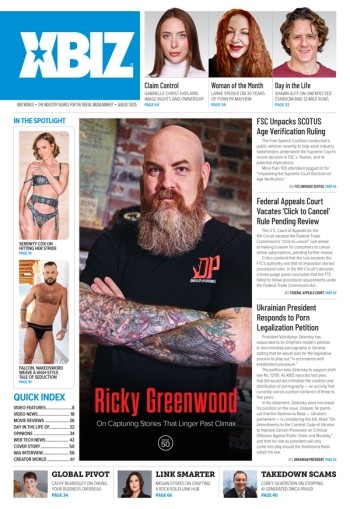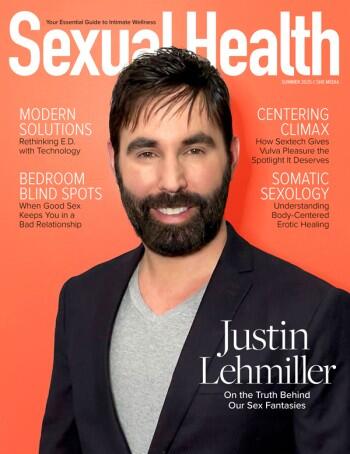We are hearing more frequently about pH in product advertising and in nutrition discussions these days, but many of us don’t understand the importance or the meaning behind “pH balanced.” What do these pH numbers mean and why are they so important?
It behooves us to understand what role pH plays is so that we can use it to our sexual health and overall wellness advantage, not to mention helping our customers to be healthier and better educated. There is a sexual health and wellness movement gaining strong momentum and understanding things like pH and how it influences sexual health is just smart – personally and professionally.
It behooves us to understand what role pH plays is so that we can use it to our sexual health and overall wellness advantage, not to mention helping our customers to be healthier and better educated.
The pH or Potential of Hydrogen range is 1-14, acidic on the low side, alkaline on the high. Our bodies are in a constant flux to maintain an optimal balance between acidity and alkalinity to provide the best environment in which our cells can thrive. We can help or hinder this balancing act with our diet, medication, environment, stress levels, product use etc.
Pure water has pH of 7 or neutral, a pH less than 7 is acidic and greater than 7, basic or alkaline. Normal blood pH is in the low 7s, good urine pH is about 6-6.5 and healthy saliva is between 6-7.4. Our cells function optimally when the above-mentioned are in balance. When our pH goes awry or gets disrupted anywhere in the body, we can become susceptible to disease, infection and pathogens gaining a foothold.
Female libido and sex drive is directly related to our sexual and overall health. Women’s sex organs are largely internal and of mucous membrane tissue, which is more delicate and finicky than a man’s external genitalia. A healthy vagina is acidic and has a pH of about 4.5 and the vulva is around 5. Post-menopause, it is slightly more alkaline. A normal, healthy vulvovaginal environment is a delicate balance of good and bad bacteria with a genius natural defense mechanism in the form of Lactobacillus flora or Lactobacilli. These keep the vagina’s natural yeast population in check. The lactobacilli flourish and are happiest in an acidic space which it self-maintains through lactic acid production which provides protection against infection. It is when our pH is thrown off and becomes more alkaline that yeast or candida can proliferate or bad microorganisms can take over resulting in infection and thus a very irritated, unhappy and non-sexual woman.
Seventy-five percent of all women will experience a yeast infection in their lives and more than 50 percent two times or more – those number are too high and I believe can be reduced if we educate ourselves and our customers as to the importance of maintaining optimal vulvovaginal pH.
There are numerous culprits that cause vaginal pH to shift, resulting in dreaded itching, burning, irritation and infection. Many off-the-shelf soaps are pH 9-10 or are anti-bacterial and strip the vulva of all bacteria that renders it vulnerable. Sex friction and semen (pH of 7-8) can negatively impact our delicate environment too. Having new or multiple lovers often results in irritation and imbalance. Sugar and glycerin can quickly result in vulvovaginal pH change and provide nourishment for undesirable yeast. This is why women with diabetes are more susceptible to yeast infections as they produce more glucose. Our menstrual flow is also culprit: it is a stream that transports out good flora and fauna as it exits the body so the body must monthly re-establish pH. Stress or super-tight clothing can also result in upsetting the pH apple cart. Another typical one is antibiotics use that kills off Lactobacilli and thus sets the stage for BV and yeast infections in some women.
This is a seemingly long list of pitfalls, but there are steps we can take to mitigate them to help keep the vagina healthy and harmful microorganisms at bay. Proactive measures such as the use of pH balanced washes free of perfume and propylene glycol is smart. Avoid douching and off-the-shelf antibacterial soaps. Talk to your physician about regularly taking a probiotic, especially when prescribed antibiotics. Consider a quick rinse after sex to remove alkaline sperm or lube if sensitive and susceptible to imbalance. Use sites like Leaping Bunny to learn about ingredients and read labels. Notice what typical irritants are for you (some condoms, certain lubes, Aloe for a very small slice of the population, dyes) so you can form new self-care habits.
Please keep in mind that the vagina is miraculously self-cleansing and doesn’t require aggressive cleaning or dressing up. A healthy vagina is neutral smelling and has a rhythm we should become familiar with, so it is easy to identify when/if there is vulnerability. A healthy vulvovagina with proper pH is one key to a happy, healthy, sexy woman.
Nina Helms is the “Chief Enthusiast” of Sex and Health Enthusiasts – a skin care system for superior sexual health and Intimate Fitness. For more information, visit SupportsYourSexy.com.







